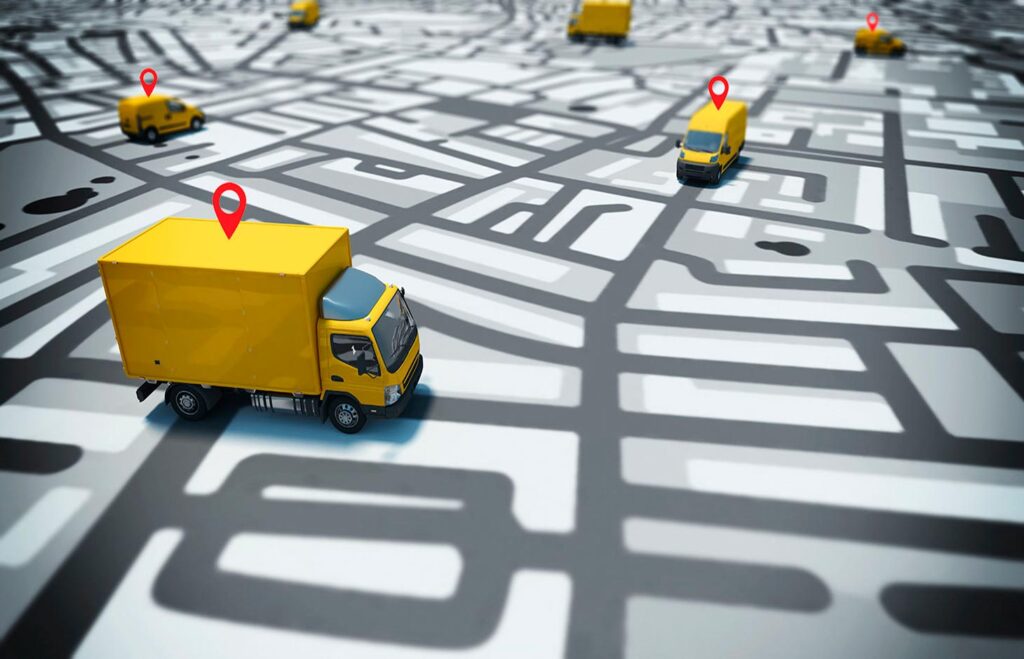When discussing automotive innovation, driverless cars is the first thing that comes to mind for many. Self-driving cars promise to change the way we travel, but while companies like Uber are working out the kinks, there are hundreds of other innovations in the field of telematics that are already altering the vehicular landscape.
Telematics combines telecommunications and vehicular technologies. These innovations can be found in the areas of road transportation and safety, wireless communication, multimedia, and more.
Telematics applications include tracking of vehicles, trailers, and containers, fleet management, satellite navigation, emergency warning systems, car-sharing, and other intelligent vehicle technologies. Thanks to the Internet of Things (IoT), the telematics industry is seeing more breakthroughs than ever before.
IoT is the extension of internet connectivity to physical devices and everyday objects.
When IoT and telematics come together, vehicles can be enhanced with electronics, connectivity, and hardware that allow them to communicate and interact with other devices.
This technology is responsible for many of the innovations found in our vehicles today, from the onboard global positioning systems (GPS) drivers use for directions, to the internet connectivity of your car’s personal Wi-Fi hotspot.
Telematics IoT applications are making our roads safer, giving drivers a more enjoyable experience, and helping businesses better manage their vehicles. As a result, drivers using these applications report a number of benefits, such as theft prevention, lower insurance premiums, and improved driving behavior.
According to a report by management consulting firm McKinsey and Company, the telematics market is expected to reach $750 billion by 2030. Automotive businesses around the globe are scrambling to get their piece of the pie.
In April, tire manufacturer Bridgestone announced its acquisition of TomTom Telematics, a digital fleet solutions provider. Similarly, in March, automotive communications company I.D. Systems announced plans to acquire mobile telematics and IoT company Pointer Telocation.
Here’s some more information to know about this growing industry:
Telematics applications coming to a road near you
Telematics is a vast field that includes various aspects of telecommunications, wireless connectivity, electrical engineering, IT, and road transport. Connected cars and other automotive technologies are currently garnering the most attention in telematics innovations. Popular applications include car concierge systems, onboard connectivity services, and insurance plans based on driving behavior.
Telematics in Fleet management
Perhaps the telematics technology seeing the most impact from IoT innovation is fleet management. Companies like Aeris are using telematics and IoT to help businesses manage and monitor various types of utility vehicles.
Telematics systems also facilitate the exchange of information between a central location and individual fleet vehicles. There are applications that can monitor employee driving behavior by tracking how fast an employee drives and making sure drivers aren’t taking unauthorized breaks. These applications can also help businesses analyze travel data to better streamline their transportation processes.
Additionally, commercial vehicle fleets are required to automate their RODS (Record of Duty Status) reports which includes driving time, idling time, mileage, driving behavior etc. In 2017, the Federal Motor Carrier Safety Administration mandated that commercial vehicle carriers and their drivers begin using telematics enabled IoT devices to collect RODS data.
Millions of commercial long-haul service trucks in the U.S. now use an IoT device connected to their vehicles to collect and report data.
The federal government is in the process of rolling out telematics technology in more than 200,000 U.S. government vehicles.
Early in 2019, IoT and telematics business Geotab announced it had been awarded the largest single-source telematics contract to date by GSA Fleet, a division of GSA, which provides centralized procurement for U.S. federal agencies.
Geotab—a global leader in connected transport—then launched its North American Public Works solution for government fleets in June 2020. This move provides fleet managers of all government vehicle types “full visibility into the operational data on one single platform and provides the toolsets to effectively remain compliant, reduce costs and maintain road safety.”
In addition to Geotab technology’s many features, there is also a native Stax Bill integration to the Geotab cloud, facilitating real-time billing data communication. This provides Geotab resellers and distributors with agile monetization opportunities to scale their businesses.
Telematics in Road safety
A study by the National Highway Traffic Safety Administration indicates that connected vehicle technologies have the potential to reduce up to 80% of crashes where drivers are not impaired.
The U.S. Department of Transportation’s Connected Vehicle program is partnering with transportation agencies and vehicle and device makers around the country to test and evaluate technology that will enable cars, buses, trucks, trains, roads, and smartphones to communicate.
According to USDOT, connected vehicles can dramatically reduce the number of fatalities and serious injuries caused by accidents on the road. USDOT estimates 1,083 lives could be saved by deploying just two of the many connected vehicle safety applications being developed by the agency.
Telematics in Consumer applications
Telematics is revolutionizing consumer vehicle technology.
Applications include:
- remote vehicle location using GPS
- remote access to vehicle operation information
- remote vehicle speed limit controls
- vehicle diagnostics and maintenance notifications
- turn-by-turn navigation with augmented 3rd-party information
- vehicle collision notifications to third parties, including to emergency responders and to family members
Other applications emerging in the market involve vehicle communications technology that allows a vehicle to connect to a variety of IoT devices. This technology means a car can exchange data with other connected vehicles, smart traffic lights, toll road collection points, and 3rd-party products and services.
These new innovations can provide drivers with guidance on collision avoidance, intersection information, and road hazard warnings, as well as alerts for traffic, emergency vehicles, and pedestrian crossing. Additionally, they can give drivers information about the city they’re in, help them access smart home applications, and more.
For example, smart mobility company Weather Telematics Inc. is introducing a new platform that will provide drivers with advance warnings about dangerous driving conditions on the road. The predictive safety alert application will help drivers avoid, manage, or mitigate dangerous road conditions before they occur.
Challenges facing telematics IoT businesses
A report by professional services firm Ernst and Young (EY) predicts the global telematics market is poised to grow exponentially. By 2025, EY estimates approximately 104 million new cars will have some form of connectivity.
According to EY, there are a number of factors driving this growth. The distances passengers travel is expected to nearly double by 2050. Meanwhile, the number of hours drivers are delayed due to congestion is also expected to double. As these two numbers increase, experts predict the automotive industry will be in need of innovative solutions.
The EY report identified a number of challenges facing the industry. EY divides the telematics ecosystem into three layers:
- services for end users (both vehicle-independent and vehicle-centric),
- the infrastructure enabling delivery of those services,
- the stakeholders who manage them.
The stakeholders in each of these layers also has their own unique set of challenges.
Many telematics stakeholders still struggle to find sustainable “connected car” business models. Original equipment manufacturers continue to deal with the high cost of embedding modules in their vehicles.
Telematics service providers often struggle with low subscription rates, which have forced stakeholders to revisit service packaging and pricing strategies. Agile monetization platforms such as Stax Bill provide solutions to this particular pain point, and offer cloud-based billing engines that bring pricing flexibility to benefit the whole ecosystem, the manufacturer, reseller, and end user.
Currently, telematics adoption overall remains low, according to the McKinsey and Company report we touched upon earlier. At 20%, the United States boasts the highest rate of adoption. Other countries like the United Kingdom have rates as low as 5%.
The lack of widespread telematics adoption, especially for IoT applications, is partly caused by the privacy issues associated with the technology. As with any other innovation, cost is also a barrier.
However, due to the practical benefits of telematics IoT, these challenges are expected to be resolved in the coming years. This should result in exponential growth, in parallel with IoT advancements.
Tech privacy issues are gaining more attention, and developers are working to make their applications more secure.
Additionally, like with most products and services, when consumer use increases, the price inevitably drops. As these issues are addressed a number of beneficial and innovative telematics applications will be available in every single vehicle, manned or un-manned, on the road.







